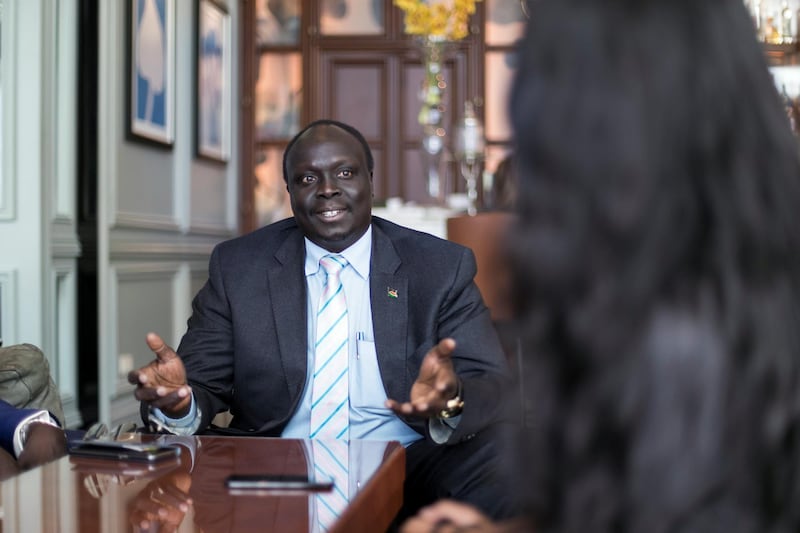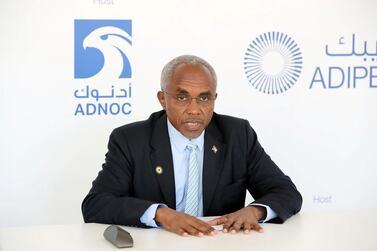South Sudan is looking to attract $3 billion across its energy sector over the next five years as it courts foreign investment to develop its oil resources - one of Africa’s largest - after a devastating civil war.
"In five years from now, we should be able to hit additional oil, using enhanced oil recovery, we'll be close to 300,000 barrels per day," Awow Daniel Chuang, director general for petroleum authority told The National in an interview in Dubai.
"I think we should be looking at $1.5bn" of upstream investments, he added.
South Sudan, the world’s youngest country and which broke away from Sudan in 2011, has Africa’s third-largest oil reserves at an estimated 7 billion barrels, with more resources still unexplored. The country currently produces below capacity at 165,000 bpd after a two-year civil war devastated oil facilities.
Now South Sudan is seeking foreign investment and expertise in reviving oil production, which accounts for nearly all of its export revenues, after a peace deal came into place between the government and a rival faction operating out of Khartoum, Sudan..
South Sudan expects to increase production capacity to 190,000 bpd by year-end, at which time the country also aims to start its first-ever geological survey to map out concessions.
"We are planning to start the geological survey this year and hopefully by next year we can open up the blocks,” said Mr Chuang.
The South Sudanese petroleum ministry will then tender up to eight blocks and hopes to attract international oil companies to explore for hydrocarbons.
The ministry is optimistic that South Sudan’s oil wealth is far higher than previously estimated.
"When we broke away from Sudan, we walked away with 5.12 billion [barrels] and it’s around 10 per cent of the explored area. Three-quarters of South Sudan still has oil, so there’s a lot of potential,” said Mr Chuang.
South Sudan will look to work with IOCs on the basis of exploration, production and sharing agreements. Majors such as Total, Exxon Mobil and state-owned Kuwait Foreign Petroleum Exploration Company (Kufpec) have worked in South Sudan prior to the conflict.
"As prospects of the crisis have diminished, we expect them back,” said Mr Chuang.
The petroleum ministry is also looking to develop significant refining capacities in South Sudan, which currently has no refinery and exports nearly all of its crude to neighbouring countries.
The country would require at least 80,000 bpd of refining capacity, which will be phased in with refineries of 10,000 bpd to 50,000 bpd capacities built over the coming years.
With current demand for refined crude averaging 15,000 bpd and 18,000 bpd, the ministry estimates that South Sudan’s future demand growth will not exceed 40,000 bpd over the next five years. The remainder will be spared for export to Sudan, Ethiopia and Uganda.
"For us to put a capacity of 80,000 bpd we need close to $1.5bn, $1.6bn and we hope that in three years time we can realise [this],” said Mr Chuang.
The country also plans to deploy an extensive network of midstream infrastructure to support its refining ambitions with plans to invite foreign investment into a storage facility that could cost up to $250 million.
"We tried over the years, especially in 2013 [to attract investment]. If they can come now in the time of peace, it will be the right time,” said Mr Chuang.








